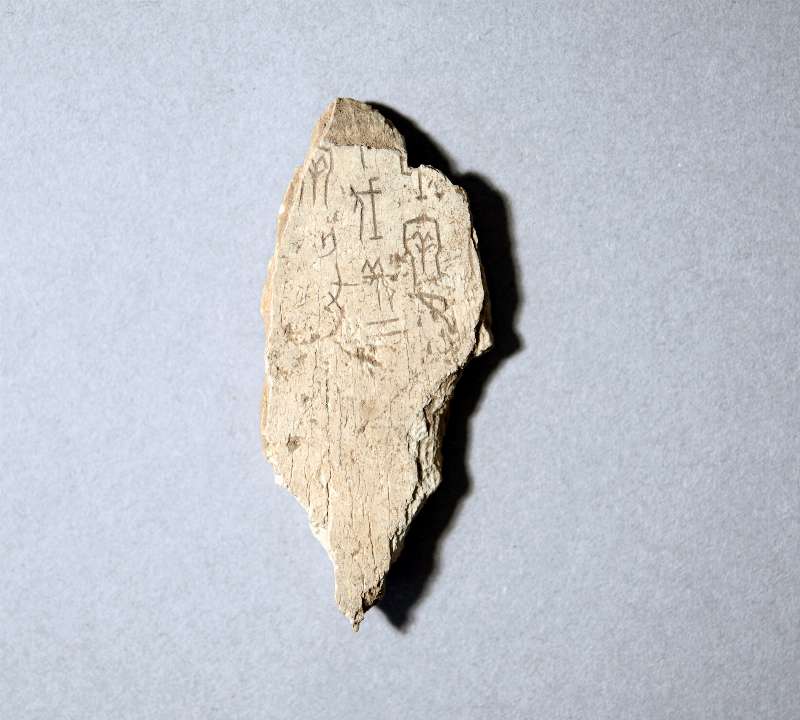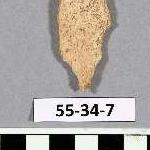Oracle Bone
55-34-7
Location: On Display in the Asia Galleries
From: China | Henan | Anyang | Xiaotun
Curatorial Section: Asian
| Object Number | 55-34-7 |
| Current Location | Asia Galleries - On Display |
| Culture | Chinese |
| Provenience | China | Henan | Anyang | Xiaotun |
| Period | Shang Dynasty |
| Date Made | Shang Dynasty |
| Section | Asian |
| Materials | Bone |
| Technique | Inscribed |
| Inscription Language | Chinese Language |
| Description | Fragment of bone with ancient Chinese characters inscribed on it. Said to be one of a collection of oracle bones obtained by Langdon Warner in 1913-14 at the village of Xiaotun at the site of Anyang. Shang Dynasty kings used oracle bones as a form of divination to seek supernatural guidance about important political, social, and personal issues. Usually created from cattle shoulder blades and the underside of turtle shells, the bones were smoothed and then heated until they cracked. By interpreting the cracks, royal diviners believed they were receiving insight that allowed them to answer questions about the future. In many cases, a record of the reading was written on the bones. These texts provide invaluable information about early Chinese religion, politics, and elite life. |
| Height | 5.5 cm |
| Width | 2.2 cm |
| Credit Line | Exchange with Peabody Museum, Harvard, 1955 |
| Other Number | 15-44-60 - Peabody Number | D836 - Other Number |
Report problems and issues to digitalmedia@pennmuseum.org.




